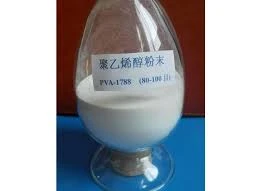The Role of HPMC in Pharmaceutical Applications
Hydroxypropyl methylcellulose (HPMC) is a versatile and widely used cellulose derivative in the pharmaceutical industry. With the increasing demand for pharmaceutical formulations that provide controlled release and enhanced bioavailability, HPMC has gained importance due to its unique properties. This article delves into the composition, properties, and various applications of HPMC in pharmaceuticals.
Composition and Properties
HPMC is synthesized through the modification of cellulose, a natural polymer derived from the cell walls of plants. The process involves the etherification of cellulose with propylene oxide and methyl chloride. This modification introduces hydroxypropyl and methoxy groups into the cellulose structure, enhancing its solubility and functionality.
One of the key properties of HPMC is its ability to form gels and films when hydrated. It is a non-ionic polymer, which means it does not ionize when dissolved in water, making it compatible with a wide range of drugs and excipients. HPMC exhibits high viscosity at low concentrations, allowing for the formulation of viscous solutions or gels, which can improve the stability and release profiles of drugs.
Additionally, HPMC is known for its thermal stability and resistance to degradation. This characteristic is particularly important in pharmaceutical formulations that require a prolonged shelf life. It also has a relatively low toxicity profile, making it suitable for use in various dosage forms, including oral, topical, and parenteral applications.
Applications in Pharmaceuticals
1. Controlled Release Formulations
One of the most significant applications of HPMC in pharmaceuticals is its role in controlled release (CR) formulations. HPMC can be used to create matrix tablets that release the active pharmaceutical ingredient (API) in a regulated manner. The polymer's swelling and gel-forming properties allow for a sustained release of the drug over an extended period. This is particularly advantageous for drugs with a short half-life, as it helps maintain therapeutic levels in the bloodstream while minimizing side effects.
The rate of drug release from HPMC-based formulations can be modulated by altering the concentration of the polymer, the proportion of other excipients, and even the method of processing. This versatility enables formulators to design tailored drug delivery systems that meet specific therapeutic needs.
chemic hpmc

2. Thickening and Stabilizing Agent
HPMC is frequently employed as a thickening agent in various pharmaceutical formulations, including suspensions, emulsions, and gels. Its ability to increase the viscosity of a solution without significantly affecting the bioavailability of the drug makes it a valuable excipient. By improving the rheological properties of these formulations, HPMC enhances the stability and distribution of the active ingredients.
In topical formulations, HPMC helps stabilize emulsions, preventing phase separation, and enhancing the sensory attributes of the products. This attribute is particularly important in creams and ointments, where a uniform and creamy texture is desired.
3. Film Coating
Another vital application of HPMC is in film coating for oral dosage forms. The polymer can be used to create a protective coating on tablets and capsules, which helps mask undesirable tastes, improve appearance, and provide a controlled release of the drug. HPMC-based coatings are preferred due to their flexibility, film-forming ability, and resilience.
Moreover, HPMC films are not affected by gastric fluids, allowing for the design of formulations that release their contents in specific regions of the gastrointestinal tract, thereby enhancing the bioavailability of certain drugs.
4. Sustained Release Matrix in Suspensions
HPMC's gelling properties make it an excellent candidate for use in sustained-release suspensions. When incorporated into a suspension, HPMC provides a controlled release of the drug while maintaining its solubility and providing a smooth texture. This application is particularly beneficial for pediatric or geriatric patients who may have difficulties swallowing solid dosage forms.
Conclusion
In summary, Hydroxypropyl methylcellulose (HPMC) plays a significant role in modern pharmaceutical formulations due to its unique properties. Its ability to function as a controlled release agent, thickening agent, film former, and stabilizer makes it invaluable in creating effective therapeutic products. With ongoing research and advancements in pharmaceutical technologies, the applications of HPMC will continue to expand, offering innovative solutions for drug delivery and patient care. As the pharmaceutical landscape evolves, the role of HPMC in ensuring safe and effective treatments remains a cornerstone of pharmaceutical development.
-
The Application and Significance of Construction RdpNewsMay.19,2025
-
Industrial Grade HpmcNewsMay.19,2025
-
Building Coating Adhesive Building Coating Adhesive HpmcNewsMay.19,2025
-
Application Of Hpmc For Detergent For Detergent In DetergentsNewsMay.19,2025
-
Application Of Hpmc Cellulose In Cement-Based MaterialsNewsMay.19,2025
-
Application Of High Quality Hpmc For Construction In The Field Of ConstructionNewsMay.19,2025




